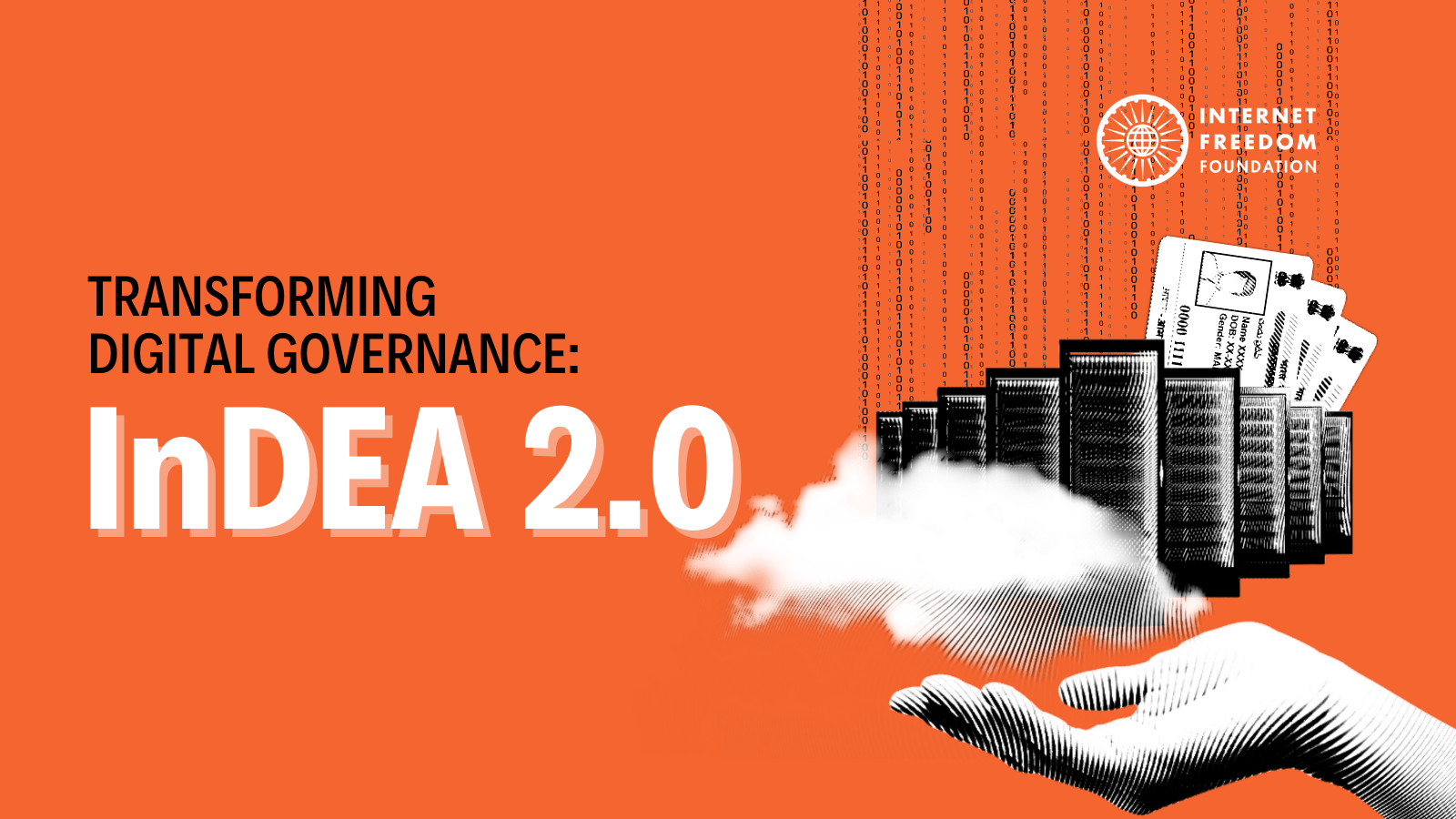
tl;dr
MeitY released a consultation paper on India Digital Ecosystem Architecture 2.0 in January 2022. In this post, we have presented a non-opinionated summary of the 98-page document, focussing on the data-rights-centric parts of the document. Through this summary, we hope to better inform public awareness and increase public participation on the issue. Comments on this paper have been invited by MeitY from the public and other stakeholders latest by February 27, 2022.
Background
In January 2022, MeitY released a revised version of the India Digital Ecosystem Architecture (InDEA) Framework, which was first released in December 2018. InDEA 2.0 lays increased emphasis on the creation of ecosystems, rather than stand-alone systems.
The entire document has been divided into seven themes: Chapter one sets out the context and need for InDEA 2.0. It also discusses the structure and the intended audience of this framework. Chapter two talks about the founding 27 principles on which InDEA 2.0 is built upon. Chapter three discusses the three architecture patterns which can be used depending on the need of the entity or the government department. Chapter four elaborates upon the federated digital identities which have been and will be created. Chapter five lists the emerging trends in the protocol approach that can be adopted and the need for adopting global standards. Chapters six and seven explain the implementation framework and the need for capacity building for InDEA 2.0.
InDEA 2.0
InDEA 2.0 is based on 27 principles organized into 5 categories: ecosystem principles, architecture principles, business principles, technology principles, and architecture governance principles. The principles are aimed at strengthening the ecosystem to further drive interoperability and innovation, and it aims to generalize the principles from InDEA 1.0 and further adopt those on which other successful ecosystems like Aadhaar, GSTN and NDHB are built upon.
It embraces a building block approach categorizing them into Core, Common and Reference blocks on the basis of the need to decentralize each layer. Out of these, only the core building blocks are proposed to be designed, developed, and managed centrally by the central or state governments.
Building on these blocks, there are three architecture patterns that can be adopted by private and public entities: the Domain Architecture Pattern, the State Architecture Pattern, and the InDEA Lite Architecture Pattern.
All of these architecture patterns and blocks are designed using global open standards such as OAS foundation and will embrace open-API by default making them interoperable across India. This is aimed to encourage a participatory design and end-user engagement.
Federated Digital Identities
InDEA 2.0 seeks to optimize the number of digital identities that a citizen needs to have by proposing a model of Federated Digital Identities. It aims to empower a citizen by allowing them to exercise control over these identities and providing them with the option of choosing the identity and its purpose.
The federated identities would act as a “key” to a registry where the ID holders can control their ID, manage the registry records and choose to use it for any third party service as they wish.
Data Empowerment
InDEA 2.0 also underlines the necessity of making the data and credentials available to an owner in a digitally verifiable form for subsequent use. The consultation paper also outlines the need for a data empowerment framework similar to Data Empowerment And Protection Architecture (DEPA).
The paper advocates for a facilitator-driven, interoperable decentralized network using open protocols. The report refers to many existing and upcoming open ecosystems such as UPI, AA, eSign, UHI, etc., which allow many applications and platforms to interconnect and interoperate seamlessly using open-source protocols.
You can read more about the India Digital Ecosystem Architecture 2.0 framework in our summary below.
How can you participate? And more!
- Read our summary and better inform your position: We have shrunk down the 98-page consultation paper into a 9-page capsule. While many of the issues are technical, effective and wide comments should definitely be made by you and we believe your voice should be heard. We encourage you to read the summary, share and adapt it in any way you may like!
- Help IFF take a position: We have from the very beginning relied on the expertise of our leadership and staff that has been strengthened by public feedback and inputs. You can write to us at [email protected].
- Submit your own comments to MeitY: Comments on this paper have been invited by MeitY from the public and other stakeholders latest by February 27, 2022. They can be sent, preferably in electronic format, to Dr. Ajai Kumar, Sr. Director, CDAC Pune & Member Convener of the WG at [email protected].
Important Documents
- Link to MeitY's Consultation Paper on India Digital Ecosystem Architecture (InDEA) Framework 2.0 (link)
- Link to our 9 page summary of MeitY’s Consultation Paper (link)
This post and the summary has been drafted by Gyan Tripathi, Policy Intern and Tejasi Panjiar, Capstone Fellow hosted at IFF and reviewed by IFF staffer Rohin Garg.

